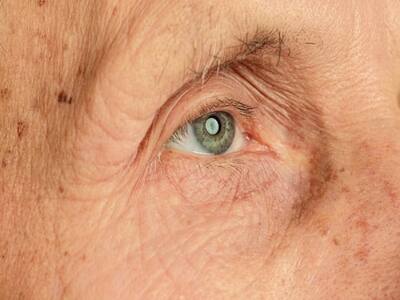
As we celebrate Cataract Awareness Month, we try to explore the factors contributing to high prevalence of blindness and visual impairment in India.
The month of June is dedicated as Cataract Awareness Month to awareness about the eye condition that affects millions of people. Cataract is an easily treatable disorder, yet it is the leading cause of blindness in the world. Cataract is the principal cause of more than 66 per cent of blindness and over 80 per cent of severe visual impairment in India, according to the National Programme for Control of Blindness and Visual Impairment Survey India 2015-19. It is also estimated that almost 70 per cent of blindness in the country is due to people not getting access to good quality eye care services.
Dr Sandeep Buttan, Technical Lead: Eye Health and Health System Strengthening, Sightsavers India, says, “The most common reason for blindness continues to be cataract, an age-related disease that can be managed surgically. Approximately 98 per cent of cataract surgeries are successful. However, if surgery is delayed, it can lead to permanent visual loss. The term “cataract” refers to the gradual clouding of the natural lens inside our eyes, resulting in progressive blurring of vision and, if left untreated, eventual blindness. Cataracts can affect one eye (unilateral cataract) or both eyes (bilateral cataract).
He adds, “According to the International Agency for the Prevention of Blindness (IAPB), India is estimated to be home to 8 million of the 36 million blind individuals worldwide. By 2050, the number of blind people could reach 115 million.”
Talking to the HealthSite, Dr Buttan sheds light on the various factors contributing to the rising cases of preventable blindness in India and important initiatives that can be taken to address the issue.
Challenges in addressing the rising issue of preventable blindness
Cataracts are among the primary causes of preventable blindness. However, there are several challenges in addressing this issue. Many individuals tend to underestimate the need for treatment until their eyesight deteriorates to a point where it significantly impairs their daily functioning. One of the main issues we have encountered is the lack of awareness among the local population about the importance of maintaining good eye health. Cultural beliefs and practices greatly influence treatment decisions within rural communities. People with eye disorders often choose to forgo surgery due to various social, cultural, and psychological reasons. These reasons include fear of surgery, hospitals, or travel, negative experiences with relatives or neighbours, family obstacles, fatalistic attitudes, and reliance on traditional remedies.
READ RELATED: 9 Inflammatory Breakfast Foods You'll Want To Avoid
Furthermore, some people believe that blindness is an inevitable part of life, while others face practical difficulties that prevent them from seeking treatment. Geographical isolation poses a significant challenge, particularly for women who often struggle to find someone to accompany them to healthcare facilities. The fear of losing daily wages and a lack of perceived necessity for treatment also discourage people from seeking early healthcare services.
The lack of support from family or society, as well as the direct or indirect costs involved, are the underlying causes of these challenges. Financial constraints are cited as the most common reason (22 per cent) for not undergoing cataract surgery (NPCB-MoHFW-GoI, 2020). However, the majority of people are aware of their eye health problems and the potential treatments available.
Initiatives needed to improve eye health across communities in India
To address these issues, it is crucial to ensure easy access to eye care services. Increasing awareness and utilizing behaviour change communication materials can encourage more people to seek eye health treatments. At the community level, comprehensive primary eye care services, including refraction and screening, can be provided. Individuals with cataracts and other eye conditions should have the opportunity to visit public and private institutions for more advanced diagnostic procedures, medical care, and surgical interventions.
Total Wellness is now just a click away.
Follow us on
window.addEventListener(‘load’, (event) => {
$(‘#commentbtn’).on(“click”,function(){
(function(d, s, id) { var js, fjs = d.getElementsByTagName(s)[0]; if (d.getElementById(id)) return; js = d.createElement(s); js.id = id; js.src = “//connect.facebook.net/en_US/sdk.js#xfbml=1&version=v2.3”; fjs.parentNode.insertBefore(js, fjs);}(document, ‘script’, ‘facebook-jssdk’));
$(“.cmntbox”).toggle();
});
});








